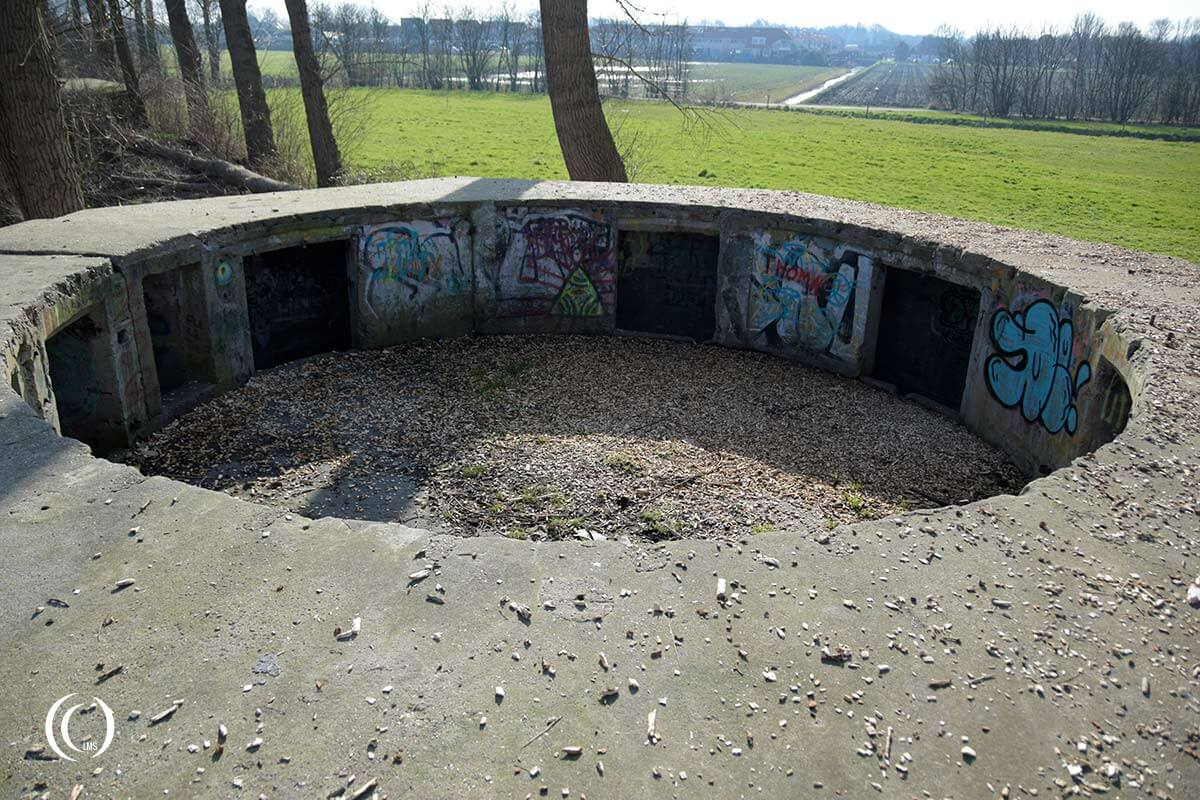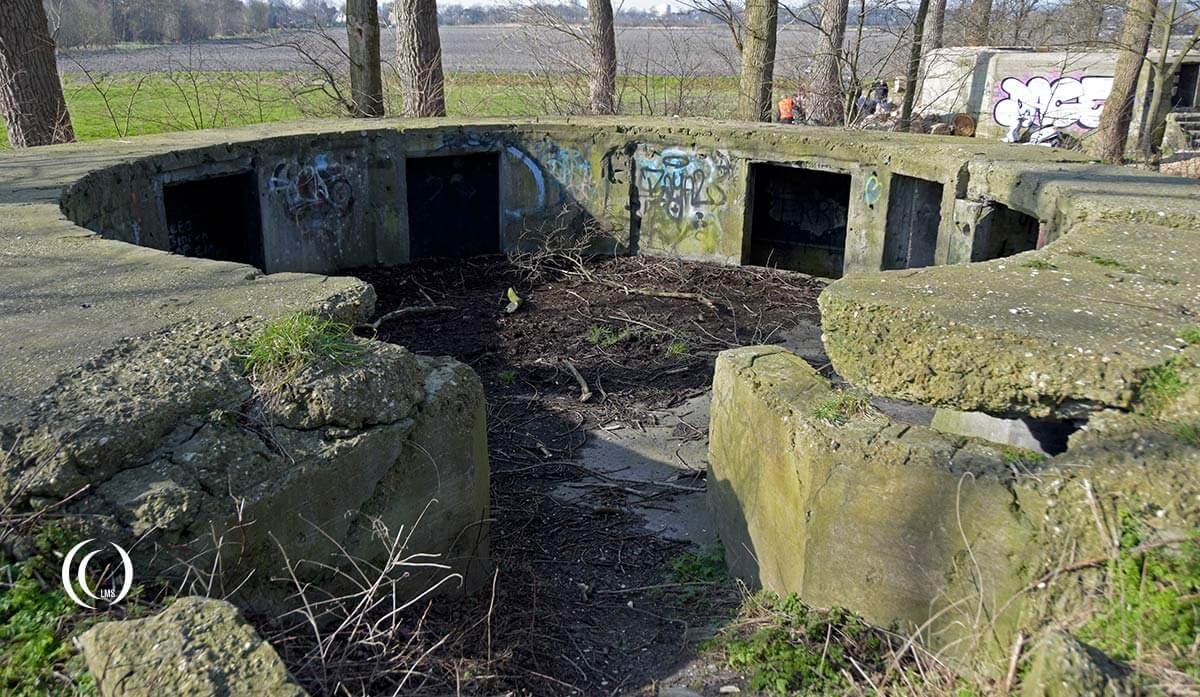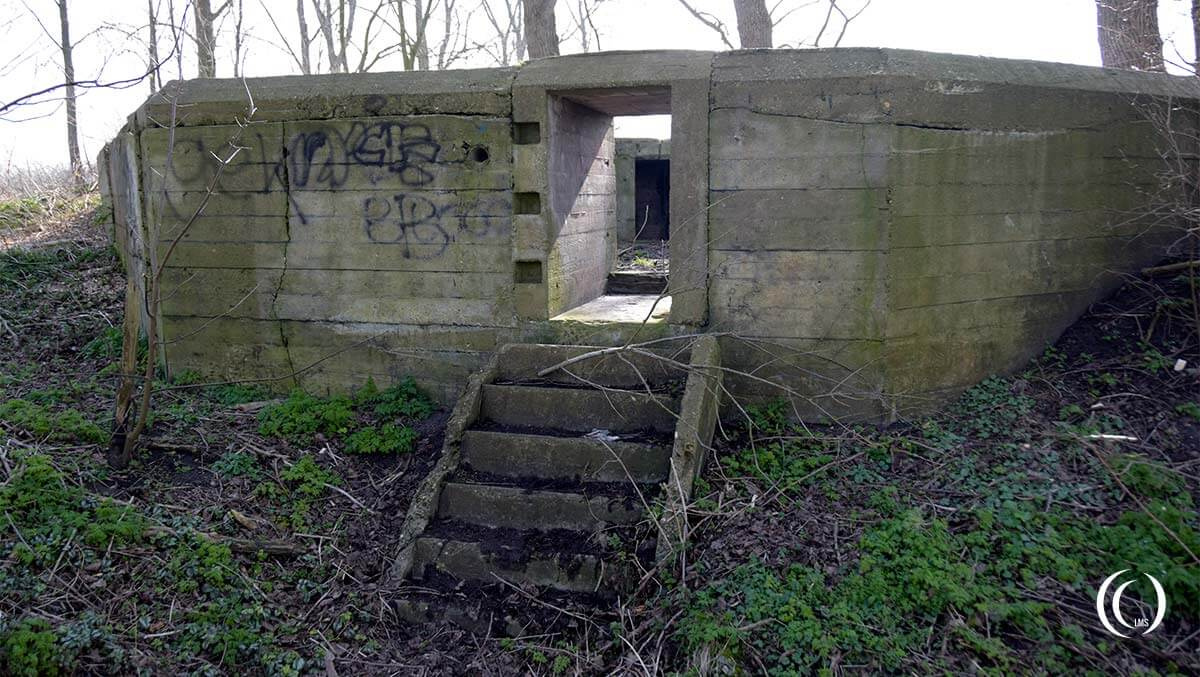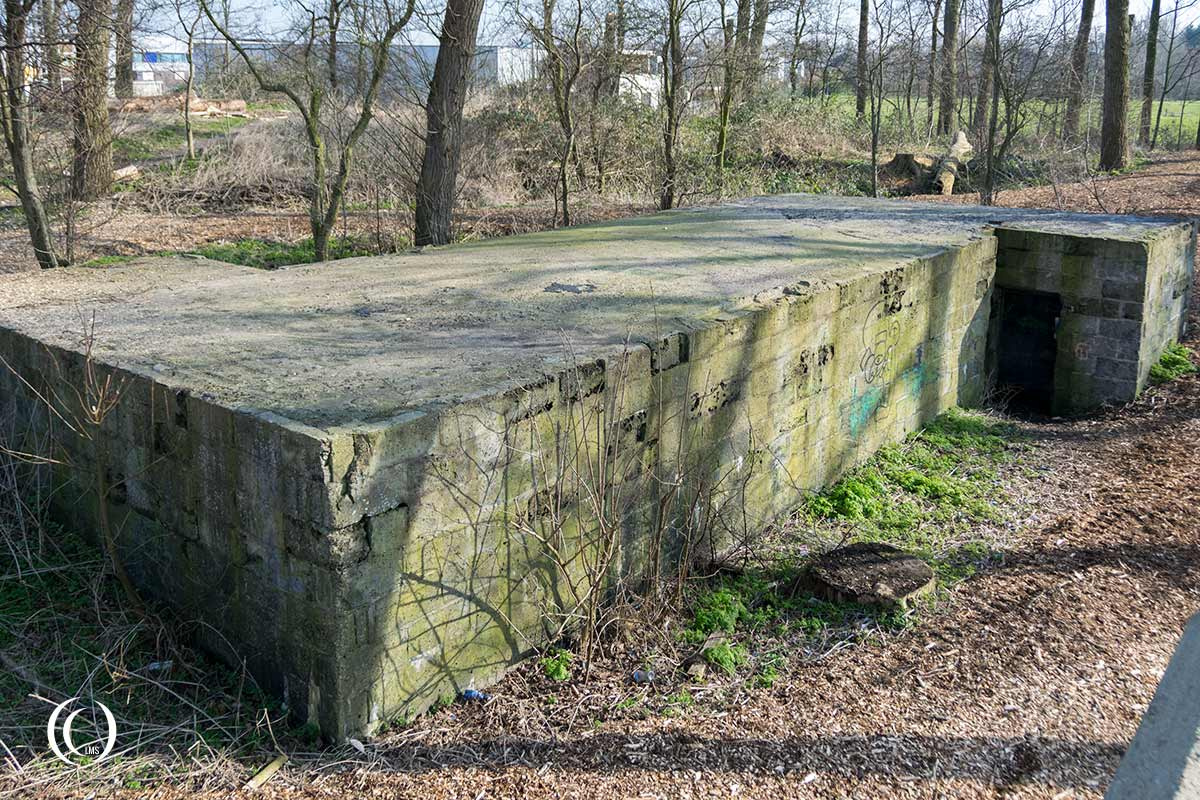
This heavy Anti-Air (AA) battery was one of four batteries that were part of Festung Vlissingen (or Fortress Flushing) on the South side of the Island of Walcheren. Flushing was of great strategic importance for the protection of the Schelde estuary. The term “Nord” (Eng: North) refers to the north of Flushing.
Kriegsmarine 105mm SK C/32 Naval Gun
Hidden in a small forest at Souburg, Batterie Nord “Stützpunkt Fichte” was a field position of the Kriegsmarine. The main armament of the position were 105mm SK C/32 naval guns (SK: Schnelladekanone). These naval guns were widely used by the German Kriegsmarine in various roles. The gun also proved itself as an effective weapon for anti-air defense.
Heavy Anti-Air Flak Battery
Walcheren found itself in the direct route of Allied bombing missions going to Germany and the batteries took a heavy toll on the planes passing overhead. Because of this Flushing eventually became one of the most bombed places of the Netherlands.
As a field position, the Vf. 14a Flak Stands were very vulnerable for such attacks. Although the stands were fitted with a steel cupola to protect against shrapnel, the thin armor and 30cm thick concrete would not withstand a direct hit. The risk of such a hit grew considerably when the heavy AA batteries drew the focus of the Allies during the Battle of the Schelde.


Battle of the Schelde
In October 1944 the batteries played a large part in fending off numerous Allied attacks both by land and air during the Schelde and Walcheren campaigns. To establish shorter supply lines, the Allies had set their target on taking the harbor of Antwerp in Belgium. But in order to secure the shipping route, they also had to gain control of the Schelde estuary. This meant they had to conquer the Isle of Walcheren and Fortress Flushing. One of the objectives was to silence the heavy gun batteries.

The flooding of Walcheren
For Battery Nord however, the real threat of being put out of action would not be a direct hit. In the wake of the invasion of Walcheren, the Allies performed multiple successful preliminary bombardments on the Island to breach its sea walls. By flooding the Island the Allies hoped to weaken German resistance and drive them out of their bunkers and other defenses. The plan largely worked, although its effect would prove a disadvantage for both sides.
The rising water exposed the battery more and more. It became a sitting duck for Allied air attacks. Halfway through October the position was completely surrounded by the water. Still its crew managed to keep the guns operational and assist in defensive operations. The crew used walkways to move around, power generators were put on the roofs of the bunkers and when the Troop bunker flooded, the crew relocated to sleeping quarters in nearby houses.
On the 1st of November 1944, the battery fired for the last time upon the incoming Commando troops at Flushing. A day later the position was abandoned.

Visit Batterie Nord “Stützpunkt Fichte”, West Souburg
Nowadays the last remnants of Batterie Nord lie hidden in the trees behind a small industrial area. Two Vf 14a Flak Stands and a small Vf Personnel Bunker remain. The rest of the battery was destroyed during the attacks in October 1944 or demolished after the war. It’s easy to miss it when you don’t know it’s there. Since 2002 the local government has made the site accessible to visitors.